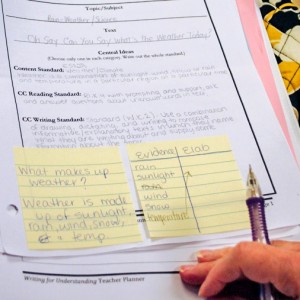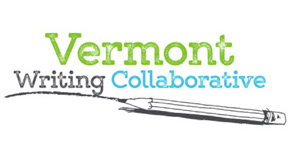Writing for Understanding is an approach to writing instruction that recognizes that at the heart of effective writing, by any accepted definition, is the building of meaning and then expressing it so that others can follow the writer’s thinking.
Therefore, Writing for Understanding recognizes that if students are to write effectively and with engagement — during testing, for their own personal growth, for school, for real life – they need to have solid, well-planned instruction that includes a deep understanding of content.
In Writing for Understanding instruction, the teacher’s guiding principle is not “Let’s see if you can write this.” Rather, their guiding principle is, “Let’s make sure you can write this.”
Conceptually, this approach is based on three pillars, or premises:

Backward Planning
Backward planning means planning for what the final student writing piece from this instruction could look like. With this knowledge, the teacher plans for how their students will acquire the content knowledge and the writing skills students will need to be able to write the piece effectively.
Download an excerpt on Backward Planning from Making it Work to learn more.

Building Knowledge and Understanding
Students cannot write about what they do not know well. This means supporting students in gathering specific knowledge, including note-taking, discussion, and planning, that they will need for planning and writing.
Download an excerpt on Substantive Knowledge Matters from Making it Work to learn more.

Direct Instruction
Students thrive with direct instruction followed by lots of guided practice. Using direct instruction and guided practice throughout instruction helps frontload the writing process so that by the end, students have a piece of writing that is clearly structured, well developed, and thoughtful – and a set of skills that are on their way to being transferrable.
Download an excerpt on Direct Instruction from Making it Work to learn more.
To learn more about the Writing for Understanding approach, check out these resources.
Read this excerpt from Writing for Understanding for a 4th grade teacher’s perspective on trying Writing for Understanding.
A 360º View of Literacy: The Pillars of Effective Writing Instruction. In this podcast, Diana Leddy discusses the foundations of the Writing for Understanding approach, the three pillars of effective writing instruction.
